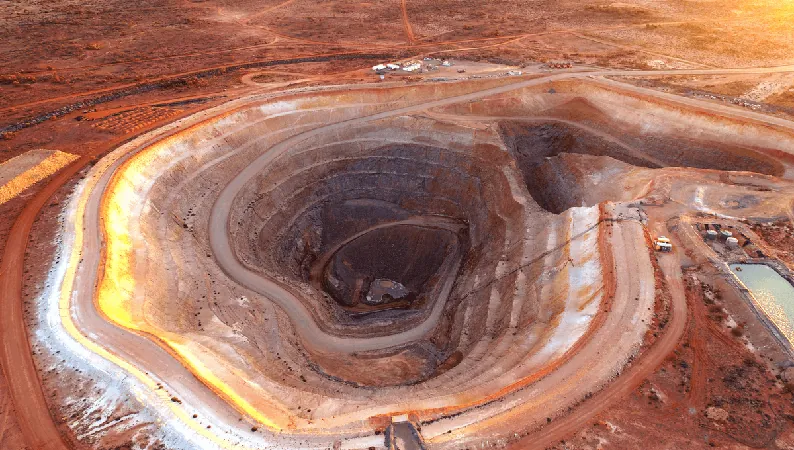
Unveiling the Secrets of Earth's Mysterious Underground Ecosystem
2025-08-25
Author: Siti
A Hidden World of Microbial Life
At the core of our planet lies a treasure trove of life, previously hidden from our understanding. Researchers presented groundbreaking findings at the American Geophysical Union's annual meeting in 2018, revealing that a staggering 70% of all microbes on Earth thrive beneath the surface—far more than anyone anticipated.
The Massive Scale of Microbial Existence
These subterranean microbes are estimated to contain between 15 to 23 billion tonnes of carbon, dwarfing the carbon mass of all humanity. This hidden ecosystem boasts a colossal abundance, prompting scientists to dub it the "subterranean Galapagos." This new nickname hints at astonishing levels of genetic diversity that may rival, or even surpass, that found above ground.
Beyond Bacteria: Life Forms in the Depths
While giant tortoises may not be waddling around down there, the subterranean realm is vibrantly alive with bacteria and their ancient relatives, archaea. Surprisingly, researchers have also stumbled upon a variety of eukarya, including a mysterious nematode discovered at depths of 1.4 kilometers (0.8 miles) in a South African gold mine.
Revolutionizing Our Understanding of Earth's Depths
Karen Lloyd, an Associate Professor of microbiology at the University of Tennessee, reflected on the journey of discovery. Just ten years prior, scientists had only sampled a few select areas, mainly where life was expected. "Now we realize that these microbes are nearly everywhere, but our exploration has just touched the tip of the iceberg," she stated.
A Volume Largely Unexplored
The research team compiled data from numerous studies that drilled into the Earth's crust at depths ranging between 2.5 to 5 kilometers (1.55 to 3.1 miles), both offshore and inland. Astonishingly, the volume of this hidden biosphere is nearly twice that of all the oceans combined.
Challenging the Limits of Life
Despite the harsh conditions—extreme heat, crushing pressures, absence of light, and limited nutrients—this ecosystem remains a beacon of resilience. The implications of these discoveries extend beyond Earth, offering insights into the potential for life in similarly extreme environments elsewhere in the universe.
Endless Questions and Boundless Curiosity
Rick Colwell, a microbial ecologist at Oregon State University, emphasizes the need for further exploration. "While our studies have unveiled exciting new knowledge, there is still so much more to learn about how subsurface life interacts with surface ecosystems," he remarked. The enigma of how life thrives under such unforgiving conditions invites us to marvel at nature's ingenuity.





 Brasil (PT)
Brasil (PT)
 Canada (EN)
Canada (EN)
 Chile (ES)
Chile (ES)
 Česko (CS)
Česko (CS)
 대한민국 (KO)
대한민국 (KO)
 España (ES)
España (ES)
 France (FR)
France (FR)
 Hong Kong (EN)
Hong Kong (EN)
 Italia (IT)
Italia (IT)
 日本 (JA)
日本 (JA)
 Magyarország (HU)
Magyarország (HU)
 Norge (NO)
Norge (NO)
 Polska (PL)
Polska (PL)
 Schweiz (DE)
Schweiz (DE)
 Singapore (EN)
Singapore (EN)
 Sverige (SV)
Sverige (SV)
 Suomi (FI)
Suomi (FI)
 Türkiye (TR)
Türkiye (TR)
 الإمارات العربية المتحدة (AR)
الإمارات العربية المتحدة (AR)